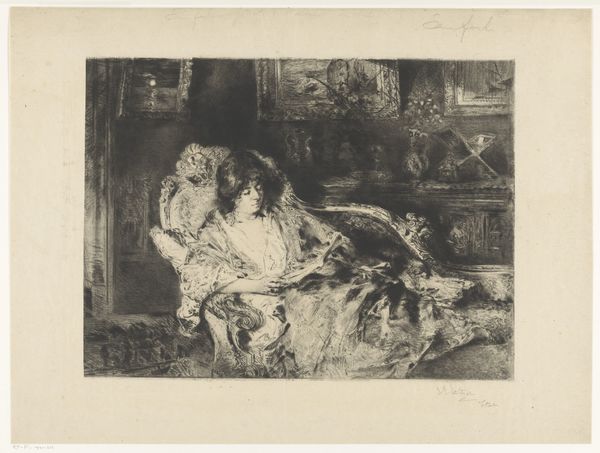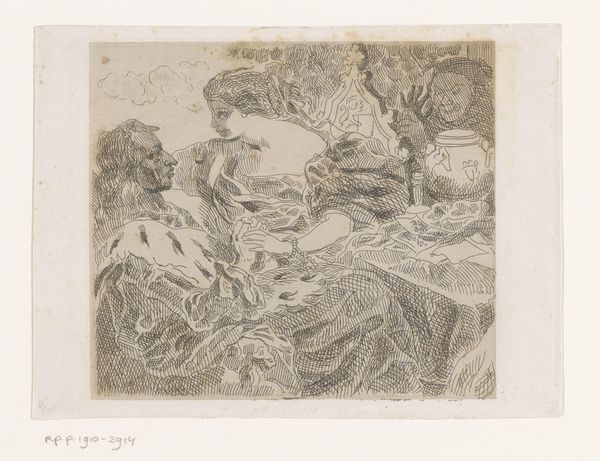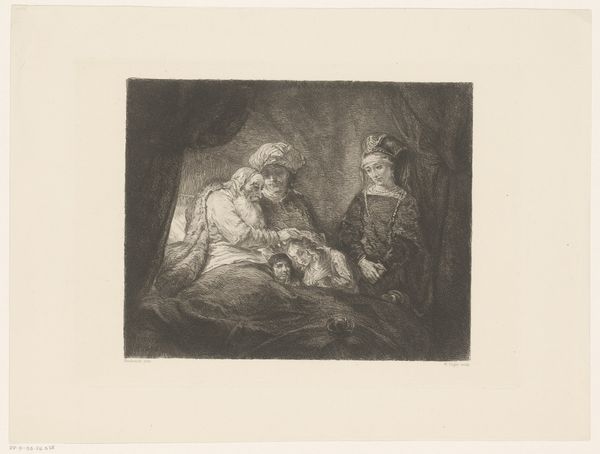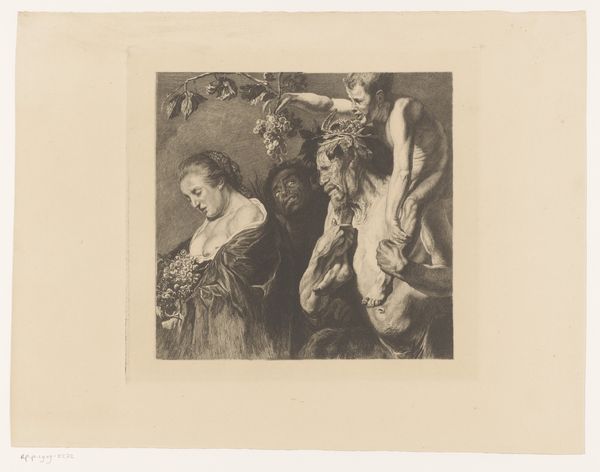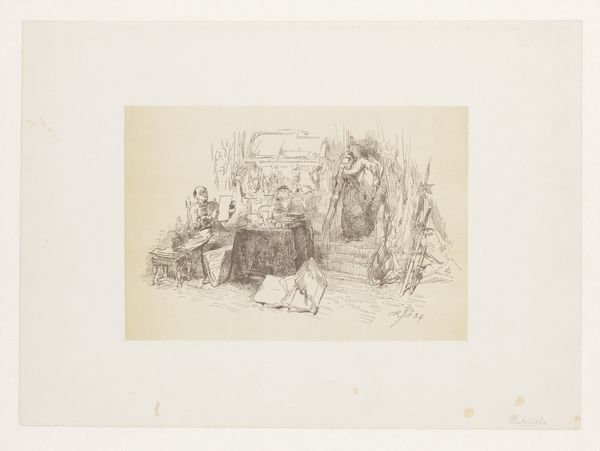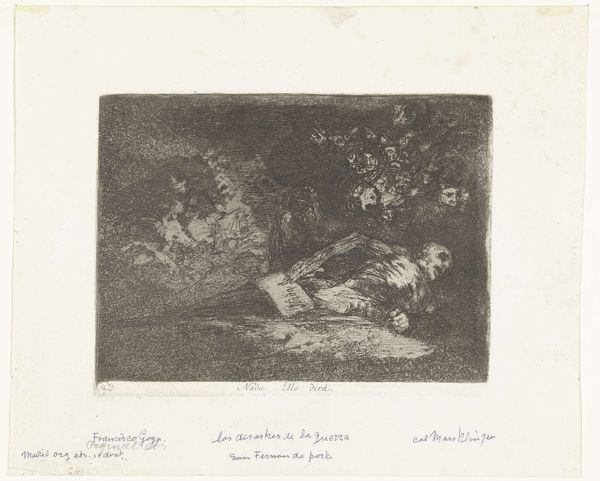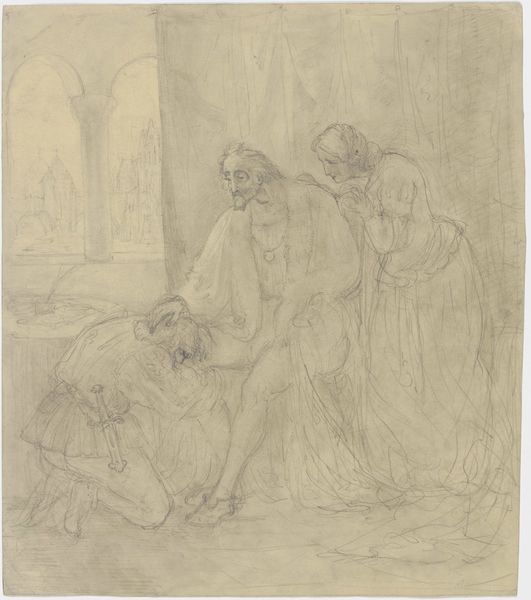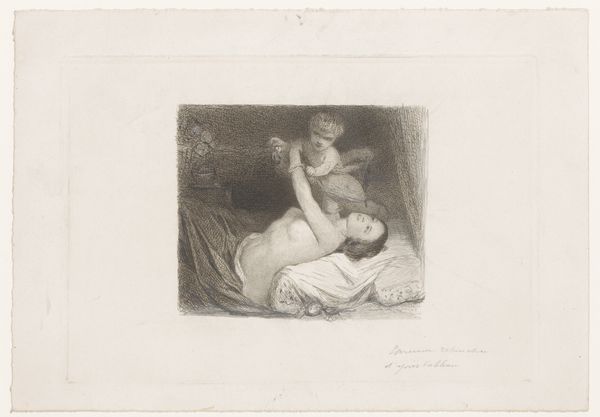
Dimensions: height 458 mm, width 510 mm
Copyright: Rijks Museum: Open Domain
Editor: This print, "Isaak zegent Jakob," likely made between 1860 and 1900 by Johannes Arnoldus Boland, depicts a scene with three figures in a tight composition, rendered with fine lines of etching. It has a very subdued, almost hushed atmosphere. What do you see in this work, from your perspective? Curator: Well, it’s a history painting filtered through a specific lens, isn’t it? This scene represents patriarchal power structures, both in its biblical source material and the historical context of its creation. Look at the way Isaac, seemingly frail, is still positioned as the authority figure, bestowing his blessing. How do you see gender operating within this image? Editor: I hadn't thought about the figures in that light before. I mean, Jakob seems almost to be feigning humility... But, seeing them positioned in the frame as characters operating within established systems does bring a new dynamic to this family scene. Curator: Exactly. And who is present in the blessing versus who is excluded? Think about the representation of domestic space and the way those spaces reinforced gender roles. Consider, too, how the biblical narrative itself might have been used to justify social hierarchies of the period when Boland was working. Does knowing this shift your impression of that "hushed atmosphere"? Editor: It does, because now there is some implied violence, or something slightly amiss, under the visual texture of those etching lines. The details like clothing feel weighted. It now resonates less as an observation on devotion and more like an act of compliance to some oppressive patriarchal system. Curator: Precisely. Art isn't made in a vacuum, it's made within society. Editor: It really puts a different spin on a seemingly simple image when you look at the artwork through the socio-historical context and those theoretical frames. It's no longer just a biblical scene. It makes you wonder what the artist thinks about power, class and religion. Thanks for elaborating, it definitely gave me a deeper view. Curator: My pleasure. Engaging with art this way enables us to actively challenge and understand it’s relationship with power.
Comments
No comments
Be the first to comment and join the conversation on the ultimate creative platform.


